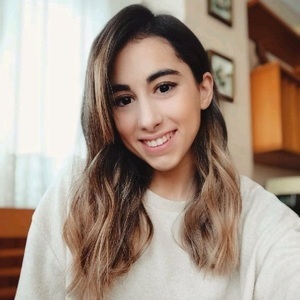34984233
UNIT 32
Descripción
Sin etiquetas
Test por Miriam González Cano, actualizado hace más de 1 año
Más
Menos

|
Creado por Miriam González Cano
hace alrededor de 3 años
|
|
Resumen del Recurso
Pregunta 1
Pregunta
Quirk defined text as “a [blank_start]stretch[blank_end] of language which makes [blank_start]coherence[blank_end] sense in the [blank_start]context[blank_end] of its use”.
Respuesta
-
stretch
-
coherent
-
context
Pregunta 2
Pregunta
Context of situation is analysed from three notions:
• [blank_start]Field[blank_end]: it refers to what is happening, to the nature of the social action.
• [blank_start]Tenor[blank_end]: it refers to who is taking part, to the nature of the participants.
• [blank_start]Mode[blank_end]: it refers to what part the language is playing, to the description of the text, including its function, channel and status.
Respuesta
-
Field
-
Mode
-
Tenor
-
Tenor
-
Field
-
Mode
-
Mode
-
Field
-
Tenor
Pregunta 3
Pregunta
• [blank_start]Cohesion[blank_end], which is related to the unity of form, that is, how utterances are structurally linked within the text.
• [blank_start]Coherence[blank_end], which is related to the unity of meaning, that is, to the relationships between the different meanings within the text.
Respuesta
-
Cohesion
-
Coherence
-
Coherence
-
Cohesion
Pregunta 4
Pregunta
In order to be coherent, a text must have a [blank_start]theme[blank_end], an organized [blank_start]structure[blank_end] and linking elements, such as [blank_start]reiteration[blank_end] or repetition.
Respuesta
-
theme
-
structure
-
reiteration
Pregunta 5
Pregunta
Michael Toolan defined narrative texts as “[blank_start]perceived[blank_end] sequence of [blank_start]non-randomly[blank_end] connected events”. This definition implies that any narration is a sequence of events, but not a sequential [blank_start]description[blank_end], but a [blank_start]consequential[blank_end] one. Another important part of this definition is that the addressee must perceive this [blank_start]consequence[blank_end]: it is the addressee the one who perceives a text as narrative.
Respuesta
-
perceived
-
non-randomly
-
description
-
consequential
-
consequence
Pregunta 6
Pregunta
Characteristics of narrative texts:
Respuesta
-
artificial fabrication
-
narrator
-
proximal deictic
-
figures of speech
-
imagery
-
technical language
-
displacement
Pregunta 7
Pregunta
Hamlet is an example of ____ plot:
Respuesta
-
person vs person
-
person vs self
-
person vs nature
-
person vs society
Pregunta 8
Pregunta
based on an imaginary setting and involving improbable characters, where the hero is aimed at defeating evil
Respuesta
-
fantasy
-
science fiction
-
realistic fiction
-
historical fiction
-
biography
-
historical writing
Pregunta 9
Pregunta
based on real historical events, although the author may be creative without making historical mistakes
Respuesta
-
fantasy
-
science fiction
-
realistic fiction
-
historical fiction
-
biography
-
historical writing
Pregunta 10
Pregunta
• Science fiction, an adventure story based on the real world, which involves [blank_start]travel[blank_end] and [blank_start]danger[blank_end], and is set in a future time facing [blank_start]contemporary[blank_end] problems.
Respuesta
-
travel
-
danger
-
contemporary
Pregunta 11
Pregunta
Realistic fiction, involving [blank_start]believable[blank_end] characters with unique human [blank_start]qualities[blank_end], and whose endings are not always [blank_start]happy[blank_end].
Respuesta
-
believable
-
qualities
-
happy
Pregunta 12
Pregunta
Hymes described context of situation including the following aspects:
- the [blank_start]form[blank_end] and [blank_start]content[blank_end] of the message;
- the p[blank_start]articipants[blank_end];
- the s[blank_start]etting[blank_end];
- the k[blank_start]ey[blank_end];
- the m[blank_start]edium[blank_end];
- the g[blank_start]enre[blank_end];
- the [blank_start]norms[blank_end] of interaction;
- the [blank_start]effects[blank_end] of communication.
Respuesta
-
form
-
content
-
articipants
-
etting
-
ey
-
edium
-
enre
-
norms
-
effects
Pregunta 13
Pregunta
Direct speech She sat down and said: “Why are they doing this?
Indirect speech She sat down and asked herself why they were doing that.
Free indirect discourse [blank_start]She sat down. Why were they doing this?[blank_end]
Respuesta
-
She sat down. Why were they doing this?
Pregunta 14
Pregunta
STRUCTURE:
• [blank_start]Orientation[blank_end], which sets up the story.
• [blank_start]Complication[blank_end] or problem, which relates the main activities and events involving the main characters.
• [blank_start]Resolution[blank_end], in which the complication or problem is resolved.
Respuesta
-
Orientation
-
Complication
-
Resolution
Pregunta 15
Pregunta
Theme is perhaps the most important literary concept, since it is the [blank_start]overarching idea[blank_end] that the writer of the story wants to be understood by the audience.
Respuesta
-
overarching idea
Pregunta 16
Pregunta
Plot refers to the [blank_start]structure[blank_end] of the narrative as it moves through [blank_start]time[blank_end].
Respuesta
-
structure
-
time
¿Quieres crear tus propios Tests gratis con GoConqr? Más información.
